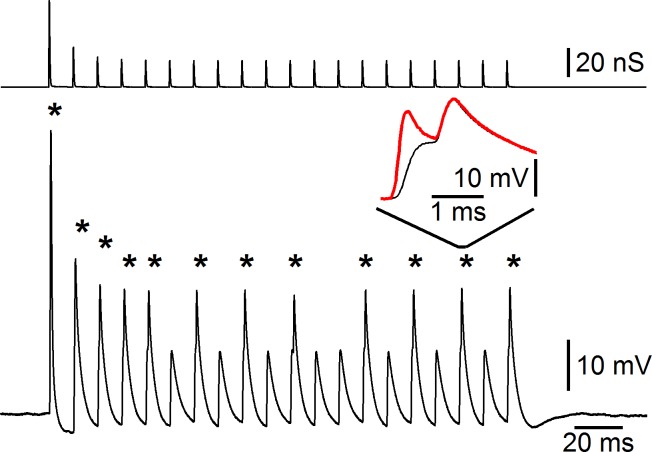Fig. 8.
Dynamic clamp of a real neuron. Recordings are made using dual-electrode dynamic clamp of a bushy cell in the anteroventral cochlear nucleus. Top trace: AMPA-like conductance applied to the bushy cell, showing strong depression. Bottom trace: response of the bushy cell. The cell shows spikes after most excitatory postsynaptic potentials (EPSPs; asterisks). Spikes in bushy cells are normally small and undershoot 0 mV (Oertel 1983). Inset: comparison between the membrane potential recorded through the current-passing electrode (red trace) and the voltage-reading electrode (black) for the 18th pulse in the train of stimuli. The membrane potential that is recorded by the current-passing electrode, which is similar to single-electrode dynamic clamp, is subject to significant capacitance transients that could be confused with action potentials in this preparation.

